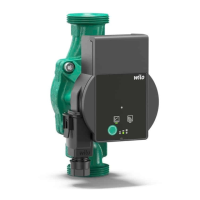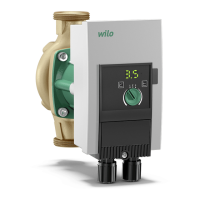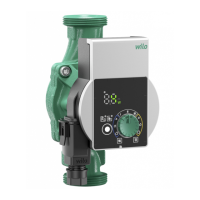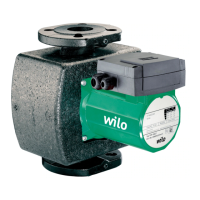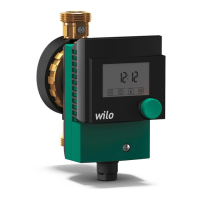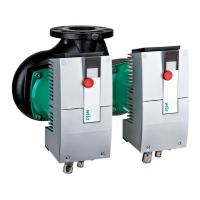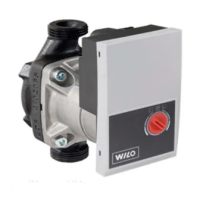Safety en
Installation and operating instructions Wilo-Atmos GIGA-N 7
Definition of “qualified electrician”
A qualified electrician is a person with appropriate technical education, knowledge and
experience who can identify and prevent electrical hazards.
2.3 Electrical work
▪Electrical work must be carried out by a qualified electrician.
▪When connecting to the mains, comply with the locally applicable laws and regulations
of the local energy supply company.
▪Before commencing work, disconnect the device from the mains and secure it against
being switched on again without authorisation.
▪Train personnel on how to make the electrical connection as well as on the methods for
switching off the device.
▪Observe the technical information in these installation and operating instructions as
well as on the rating plate.
▪Earth the device.
▪Observe the manufacturer’s specifications when connecting to electrical switching sys-
tems.
▪Comply with the specifications on electro-magnetic compatibility when using elec-
tronic start-up controllers (e.g. soft starter or frequency converter). If required, take
into account special measures (shielded cables, filters, etc.).
▪Replace defective connection cables. Contact customer service.
2.4 Transport
▪Wear protective equipment:
– Safety gloves for protection against cuts
– Safety shoes
– Sealed safety goggles
– Safety helmet (when using lifting equipment)
▪Only use legally specified and approved lifting gear.
▪Select lifting gear based on the available conditions (weather, attachment point, load,
etc.).
▪Always attach the lifting gear to the designated attachment points (lifting eyes).
▪Position the lifting equipment in a way that ensures stability during use.
▪When using lifting equipment, a second person must be present to coordinate the pro-
cedure if required (e.g. if the operator’s field of vision is blocked).
▪Persons must not stand underneath suspended loads. Do not move suspended loads
over workplaces where people are present.
Please note the following information during transport and prior to installation:
▪Do not reach into suction ports, discharge ports or other openings.
▪Avoid the penetration of foreign objects. To this end, leave the protective covers or
packaging on until they have to be removed for installation.
▪Packaging and covers may be removed from suction or outlet openings for inspection
purposes. They must be put back on afterwards to protect the pump and ensure safety.
2.5 Installing/dismantling
▪Wear the following protective equipment:
– Safety shoes
– Safety gloves for protection against cuts
– Safety helmet (when using lifting equipment)
▪Comply with laws and regulations on work safety and accident prevention in force at
the site of installation.
▪The procedure described in the installation and operating instructions for shutting
down the product/unit must be strictly observed.
▪Disconnect the device from the mains and secure it against being switched on again
without authorisation.
▪All rotating parts must be at a standstill.
▪Close the gate valve in the inlet and in the pressure pipe.
▪Provide adequate aeration in enclosed spaces.
▪Clean the device thoroughly. Disinfect devices that use fluids hazardous to health!
▪Make sure that there is no risk of explosion when carrying out any type of welding work
or work with electrical devices.
2.6 During operation
▪Wear protective equipment:
– Safety shoes
– Safety helmet (when using lifting equipment)
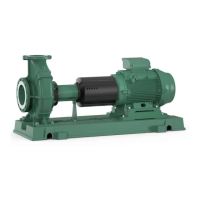
